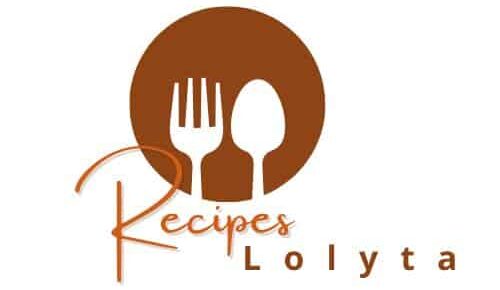Delicious Amish Cinnamon Bread Recipe: A Timeless Classic
Amish Cinnamon Bread is a delectable treat that captures the essence of comforting homemade bread with a delightful cinnamon twist. This classic recipe brings together soft, tender slices swirled with a perfect balance of cinnamon and sweetness, making it a favorite for breakfast or dessert. Its rich and aromatic flavor transports you to a warm, cozy kitchen, filled with the inviting scent of baking bread.
The Amish Cinnamon Bread offers a texture that is both fluffy and moist, with a slight crumbly finish that pairs perfectly with your morning coffee or a scoop of vanilla ice cream. Every bite is a testament to traditional baking, with a modern touch of convenience and accessibility. Whether you’re an experienced baker or a beginner looking to try something new, this recipe promises to be a rewarding endeavor.
Not only is this bread a treat for the taste buds, but its beautiful presentation also makes it a showstopper on any table. The golden-brown crust with a cinnamon-sugar topping adds a touch of elegance and rustic charm, appealing to both the eye and the palate. You’ll find that this Amish Cinnamon Bread is a delightful addition to any gathering, offering both the warmth of tradition and the joy of a sweet indulgence.
Quick Recipe Highlights
- Flavor Profile: This bread combines a rich, buttery flavor with subtle hints of vanilla and the warm spice of cinnamon, offering a sweet yet balanced taste.
- Texture: Expect a soft, tender crumb with a slight denseness that gives it a satisfying bite, complemented by a crunchy cinnamon-sugar topping.
- Aroma: The inviting aroma of cinnamon and butter is prominent, filling your kitchen with the comforting scent of homemade goodness.
- Visual Appeal: The bread boasts a golden-brown crust with a beautiful cinnamon swirl visible through each slice, making it visually enticing.
- Skill Level Needed: Basic baking skills are required, with simple ingredients and steps, making it approachable for most home bakers.
- Special Equipment: A standard loaf pan is essential, along with mixing bowls and basic baking tools like measuring cups and spoons.
Recipe Overview
- Difficulty Level: While the steps are straightforward, precision in measuring and mixing is key to achieving the perfect texture and consistency, making it moderately easy.
- Category: This recipe is perfect for breakfast, brunch, or as a dessert bread, and pairs wonderfully with coffee, tea, or a glass of milk.
- Cuisine: Rooted in Amish culinary traditions, this recipe showcases classic techniques with communal and family-focused dining in mind.
- Cost: Budget-friendly, utilizing pantry staples like flour, sugar, and cinnamon, making it an economical choice for homemade baking.
- Season: Best enjoyed during cooler months when warm spices are particularly comforting, though it is delightful year-round.
- Occasion: Ideal for holiday gatherings, potlucks, or as a homemade gift to share with family and friends, bringing a homemade touch to any occasion.
Why You’ll Love This Recipe
The Amish Cinnamon Bread captures the heart with its delectable taste and inviting aroma. The combination of cinnamon and butter creates a comforting flavor profile that is hard to resist. Each slice offers a balance of sweetness and spice that satisfies the palate, making every bite a delightful experience. This recipe is not only delicious but also versatile, whether served warm with butter or as the crowning component of a dessert platter.
The convenience of preparing this bread is one of its standout benefits. Using common pantry ingredients and requiring basic baking techniques, this recipe is accessible even to those who are new to baking. The step-by-step process is straightforward, ensuring a successful outcome that brings the satisfaction of creating homemade treats that are both impressive and comforting.
From a nutritional standpoint, this bread offers more than just sweetness. Ingredients like cinnamon come with the added health benefits of antioxidants and anti-inflammatory properties, while homemade bread allows you the control to adjust sugar levels and customize to your dietary preferences. This recipe can be adapted with various ingredients to enhance its health quotient without compromising on taste.
Sharing Amish Cinnamon Bread with friends and family is a pure joy, making it ideal for social occasions and entertaining. Its warmth and sweetness are sure to win over guests, creating memorable moments around the table. Each loaf can serve a crowd, making it a practical choice for larger gatherings and parties, where its comfort-food appeal shines.
The cost-effectiveness of this recipe adds to its charm. With ingredients that are affordable and readily available, Amish Cinnamon Bread is an economical yet indulgent option. Its simplicity doesn’t compromise its impact, offering gourmet flavors and textures that rival bakery versions without the high price tag.
Historical Background and Cultural Significance
Amish Cinnamon Bread has its roots in the rich traditions of Amish baking, known for its emphasis on community, simplicity, and quality. The Amish have a long-standing history of crafting homemade breads, with recipes passed down through generations. This bread, with its classic flavor profile, reflects a commitment to wholesome ingredients and the art of handcrafted baking.
Culturally, this bread is an embodiment of the Amish lifestyle, which values family meals and community gatherings. Cinnamon bread, in particular, reflects the Amish community’s preference for comfort foods that are both practical and pleasing to the senses. Its presence at social gatherings highlights the role of baking in bringing people together and fostering connections.
Over the years, the recipe for Amish Cinnamon Bread has evolved, incorporating modern conveniences while preserving its traditional essence. Adaptations have remained true to the bread’s original intent: to provide nourishment and joy. Today, it serves as a bridge between the charm of historical baking practices and the contemporary need for accessible, delicious recipes.
Regional variations of Amish Cinnamon Bread may feature slight modifications, such as the inclusion of nuts or raisins, to cater to local tastes. Despite these differences, the core elements remain unchanged, showcasing the enduring appeal of this beloved bread. Its variations are a testament to its versatility and adaptability, allowing it to remain relevant across diverse culinary landscapes.
Ingredient Deep Dive
Cinnamon, the star ingredient, has a rich history in both culinary and medicinal applications. Known for its warm, sweet flavor, cinnamon oils have been used in traditional medicine and cooking for centuries. Ceylon cinnamon is preferred for baking due to its delicate and well-rounded taste, making it ideal for enriching breads like this one.
The nutritional benefits of cinnamon include its antioxidant properties and ability to regulate blood sugar levels. When selecting cinnamon, opt for sticks or ground cinnamon from a reputable source to ensure quality and freshness. Store it in an airtight container away from light and heat to prolong its shelf life. If out of cinnamon, nutmeg or mixed spices can offer a similar warm spice profile.
Flour, the foundation of this bread, holds cultural significance as a staple ingredient in baking worldwide. It provides the structure and texture necessary for a hearty, satisfying slice. All-purpose flour works well for this recipe, creating a balance of tenderness and strength. For an extra nutritional boost, whole wheat flour can be substituted.
Ensure your flour is fresh and stored in a cool, dry place to prevent exposure to moisture. To avoid common issues, measure flour by spooning it into a measuring cup and leveling it off, rather than scooping directly from the bag. Other flours, such as almond or gluten-free blends, can be experimented with to adjust for dietary needs.
Common Mistakes to Avoid
- Using old cinnamon can lead to a lackluster flavor. Always check expiration dates and store properly to maintain its potency.
- Overmixing the batter can result in a dense texture. Mix just until the ingredients are combined for a smooth, tender crumb.
- Inconsistent oven temperature can lead to uneven baking. Use an oven thermometer to ensure precise temperature settings.
- Skipping the greasing of the loaf pan may cause sticking. Ensure the pan is adequately greased, or line it with parchment paper for easy removal.
- Imprecise measuring of ingredients can affect the dough’s consistency. Measure accurately for the best results.
- Baking the bread for too long can dry it out. Check for doneness with a toothpick inserted into the center; it should come out clean or with a few crumbs.
- Underseasoning the cinnamon-sugar layer can make it seem dull. Ensure an even distribution for optimal flavor.
- Ignoring resting time may affect the bread’s final texture. Allow the bread to cool before slicing to maintain its soft structure.
Essential Techniques
Mixing the batter correctly is crucial for the perfect texture. Use a gentle hand, combining the wet and dry ingredients just until they are incorporated. This prevents overdevelopment of gluten, which can lead to a tough bread. Aim for a smooth, uniform batter without visible streaks of flour.
Layering cinnamon and sugar in the middle is a key technique that enhances the bread’s flavor. Tilt the loaf pan to spread the mixture evenly, ensuring a consistent swirl throughout each slice. This creates a beautiful visual contrast and a burst of cinnamon sweetness.
Baking to perfection requires attention to visual cues, such as a golden-brown top and a fragrant aroma that fills the kitchen. A toothpick test is essential to confirm doneness; it should come out clean from the center, indicating the bread is fully baked.
Pro Tips for Perfect Amish Cinnamon Bread
- For an added depth of flavor, consider using a combination of Ceylon and Cassia cinnamon in the sugar filling.
- Enhance the topping with a sprinkle of coarse sugar for a satisfying crunch that contrasts with the soft interior.
- If making multiple loaves, stagger their placement in the oven for even heat distribution and optimal bake.
- Experiment with add-ins like raisins or chopped nuts for additional texture and flavor complexity.
- If your oven runs hot, lower the temperature slightly and extend the baking time by a few minutes to prevent overbrowning.
- For an effortless release, line your loaf pan with parchment paper, leaving an overhang for easy lifting.
- Allow the bread to cool in the pan for at least 10 minutes before transferring to a wire rack to prevent it from breaking.
- Store leftover bread in an airtight container to preserve its moisture, keeping it soft and delicious for days.
Variations and Adaptations
Regional variations of Amish Cinnamon Bread might feature diverse spices such as nutmeg or cardamom, each introducing unique aromatic notes while staying true to the traditional sweet loaf. Seasonally, add fresh fruit purees like apple or pumpkin to make the bread appropriate for autumn or winter gatherings, providing a delightful variation in texture and taste.
For dietary modifications, swap whole wheat flour for a healthier, fiber-rich alternative. Vegan versions can be created by using plant-based milks and substituting eggs with flaxseed. Adjust the sweeteners to low-carb options like stevia for a keto-friendly variety. This adaptability makes the bread suitable for a range of dietary preferences and needs.
Flavor variations like adding swirls of chocolate or ribbons of cream cheese can transform the bread into a decadent dessert offering. Similarly, incorporating citrus zest can brighten the flavor profile, appealing to a wider audience. This versatility provides endless possibilities for creativity and personalization with each bake.
For those looking to modify the texture, consider using bread flour for a chewier loaf or incorporating sour cream or yogurt for a moist, tender crumb. These adaptations allow bakers to experiment with different consistencies, catering to varied preferences without straying far from the original recipe.
Presentation can be easily elevated with a sugar glaze or a precision drizzle of icing, adding a layer of sophistication to the loaf. For a more rustic look, consider a simple dusting of powdered sugar that overlays the cinnamon swirls gently peeking through. These presentation alternatives enhance the visual appeal, making it suitable for any elegant occasion.
Serving and Presentation Guide
When serving Amish Cinnamon Bread, consider creative plating techniques that emphasize its homemade allure. Slice the loaf into thick pieces and arrange them in a fan-like display on a wooden board for a rustic, gourmet touch. Garnish with a sprinkle of ground cinnamon or a few powdered sugar sprinkles for an added visual effect.
Traditional accompaniments, such as a side of whipped butter or a dollop of cream cheese frosting, can enhance the bread’s flavor. For a modern twist, try pairing with a tangy fruit preserve or a savory honey butter. These accompaniments cater to different tastes and enrich the bread-tasting experience.
Serve Amish Cinnamon Bread at room temperature or gently warmed for the best flavor balance. Providing options like a heated slice versus a cooled one offers guests a chance to experience different textures and intricacies in aroma. Proper portion control involves cutting the loaf into even slices, thus ensuring it evenly serves all guests and maintains its structure.
Wine and Beverage Pairing
Pairing wine with Amish Cinnamon Bread involves selecting options that complement its sweet, spicy profile. A light, fruity Riesling enhances the cinnamon notes, offering a refreshing balance. Mulled wine with its seasonal spices also makes an excellent choice, aligning with the rich aroma of the bread.
Non-alcoholic alternatives include spiced apple cider, which echoes the cinnamon flavors, or a brewed chai tea for its complementary spice blend. For those preferring coffee, a medium-dark roast with sweet undertones creates a harmonious pairing, while hot cocoa can mimic the sweetness of the bread with delightful similarity.
If serving tea, consider a black tea blend or a cinnamon-infused herbal variety, ensuring the menu offers warm, varied beverage options. These considerations create an all-encompassing tasting experience, bringing out the best in the bread while catering to different palettes.
Storage and Shelf Life
Properly storing Amish Cinnamon Bread ensures it remains fresh and delicious for several days. Store the bread in a sealed airtight container to lock in moisture and preserve flavor. Room temperature storage is ideal, but in warmer climates, refrigeration may be beneficial to extend shelf life without compromising texture.
Use containers with secure lids and avoid exposure to direct sunlight or heat, which can dry out the bread. Look for signs of spoilage, such as mold or off odors, to determine if the bread is still consumable. If freezing, wrap individual slices tightly in foil and place in a freezer-safe bag, removing air to prevent freezer burn.
To reheat frozen slices, simply pop them in the oven or toaster, allowing them to thaw gently while maintaining their softness. Warm the bread the same day for optimal flavor and freshness, reiterating the importance of proper preservation and quick use for this homemade treat.
Make Ahead Strategies
Plan ahead by preparing the batter and cinnamon-sugar mixture in advance, storing them separately in the refrigerator for up to two days before baking. This strategy simplifies the baking day, reducing prep time and allowing bakers to focus on the fun part: assembling and baking!
Store the pre-baked components in airtight containers and ensure proper labeling to avoid confusion. These preparatory steps don’t negatively impact quality, as refrigeration aids in flavor melding. When ready to bake, let the batter reach room temperature to facilitate even baking.
Assemble the bread just before baking by layering the stored pre-mixed cinnamon and sugar, optimizing texture and taste. After baking, add final fresh elements such as a simple glaze or dusting of cinnamon sugar to brighten the bread’s appearance and enhance its freshly baked appeal.
Scaling Instructions
Scaling this recipe to cater to different group sizes is straightforward. To halve the recipe, reduce all ingredient quantities by half while maintaining the same cookware dimensions. This can shorten baking time, so monitor for doneness about 5-10 minutes earlier.
For larger gatherings, consider doubling or even tripling the recipe, using multiple loaf pans. This approach doesn’t typically affect cooking time but may require batch baking to ensure uniform heat exposure. Pay attention to oven capacity and heat distribution for optimal results.
When altering quantities, adjust mixing tools accordingly. Larger bowls and sturdy mixers may be required for significant scale-ups, ensuring efficient and thorough ingredient combinations. Store any leftovers appropriately according to guidelines, maintaining quality and freshness for all scaled-up bakes.
Nutritional Deep Dive
Understanding the macro breakdown of Amish Cinnamon Bread reveals a balance of carbohydrates, fats, and moderate protein content, providing a satisfying treat with sustained energy release. Its micronutrients, largely influenced by cinnamon, offer beneficial antioxidants and contribute to overall well-being.
The health benefits associated with this bread primarily derive from its natural ingredients, including potential blood sugar stabilization from its cinnamon content. For those monitoring dietary intake, consider adjustments to sugar and fat contents as needed, creating a less indulgent version without losing the core flavors.
Portion analysis remains key for weight management, with a slice providing an indulgent, yet manageable, caloric experience. This treat can align with broader dietary preferences, with modifications available to cater to more specific nutritional needs.
Dietary Adaptations
For gluten-free adaptations, use an all-purpose gluten-free baking mix to replace traditional flour, ensuring it includes a binder like xanthan gum for structure. Dairy-free options involve substituting plant-based milk like almond or soy, offering similar consistency and flavor enhancement while remaining accessible for those with dairy restrictions.
Creating a vegan version is simple by using flax eggs or egg replacers, ensuring browning occurs effectively with the added slick provided by extra oil or apple sauce. For low-carb adaptations, replace sugar with sugar substitutes and focus on almond or coconut flour to reduce carbohydrate content while retaining flavor and texture.
Keto considerations follow similar low-carb principles, with an emphasis on healthy fats to improve satiety and invoke the creamy satisfaction intrinsic to the original recipe. Each dietary need has thoughtful modifications to ensure the classic Amish Cinnamon Bread can be enjoyed universally.
Troubleshooting Guide
Texture issues often arise from overmixing, leading to dense or tough slices. Aim to mix just until combined, preserving the bread’s characteristic softness. Address flavor balance by ensuring the right ratio of cinnamon and sugar, preventing overly sweet or underwhelming taste options.
Temperature problems, such as over or under-baking, can stem from imprecise oven calibration. Use an oven thermometer and adjust racks for even baking. Equipment challenges like improper pans or utensils can be rectified by selecting the appropriate baking essentials, ensuring the batter spreads and cooks evenly.
Ingredient substitutions may alter baking dynamics, so follow substitution ratios carefully for success. Timing concerns, particularly around cooling and slicing, can influence the presentation and texture of the bread; opt for resting loaves before cutting to maintain structural integrity and flavor.
Recipe Success Stories
Community feedback highlights how adaptable this Amish Cinnamon Bread is, with variations successfully incorporating elements like chocolate chips or a touch of nutmeg to the pleasure of home bakers. Readers have shared stories of incorporating special family nuances into their loaves, evoking nostalgia and emotional connections.
Adaptation stories reveal the creativity this recipe inspires, with dairy-free and gluten-free versions receiving positive responses from diverse audience groups. Reader suggestions often include additional spices or flavor additions, providing insight into broader flavor enhancements and creating new beloved traditions.
Photography tips from fans emphasize capturing the enticing swirl of cinnamon in each slice, focusing on natural lighting to bring out the golden-brown hue and the visual warmth of freshly baked bread.
Frequently Asked Questions
Q: Can I use whole wheat flour instead of all-purpose flour?
A: Yes, you can substitute whole wheat flour for all-purpose flour to add a bit more nutrition and fiber to the bread. Keep in mind that whole wheat may produce a denser loaf, so consider combining it with all-purpose flour for a lighter texture.
Q: How do I know when the bread is done baking?
A: The loaf is done when the top is a deep golden brown, and a toothpick inserted into the center comes out clean or with a few crumbs. If needed, gently tap the bread; it should sound hollow.
Q: Can I freeze the bread for later use?
A: Absolutely! To freeze, wrap the fully cooled bread tightly in plastic wrap or foil, then place it in a zip-lock bag. It can be frozen for up to 3 months. To thaw, place it in the refrigerator or at room temperature.
Q: What if I don’t have a loaf pan?
A: No worries! You can bake the cinnamon bread in a muffin tin for individual servings or as a bundt loaf for a unique presentation. Adjust baking time accordingly as smaller or larger pans can affect cooking time.
Q: How can I make this recipe vegan?
A: Replace eggs with flaxseed gel (1 tbsp ground flaxseed with 3 tbsp water per egg) and use plant-based milk and butter substitutes. These changes maintain flavor and texture while accommodating vegan diets.
Q: Can I halved the recipe?
A: Yes, simply halve all the ingredients and use a smaller loaf pan if available. Keep an eye on the bake time as a reduced batter volume may require less baking.
Q: What is the best type of cinnamon to use?
A: Ceylon cinnamon, also known as “true cinnamon,” is recommended for this recipe, offering a subtle and sweet flavor that complements the bread. However, Cassia cinnamon is also suitable and more commonly found.
Q: Does this recipe work at high altitudes?
A: Yes, but for best results, you might need to make slight adjustments like reducing sugar and increasing liquid. Also, increase oven temperature by 15-25°F to prevent the bread from drying out.
Q: Can I add nuts or raisins to the loaf?
A: Definitely! Adding half a cup of chopped nuts or raisins can introduce delightful texture contrasts. Be sure to incorporate them into the batter gently to maintain the bread’s light texture.
Q: What substitutes work for sugar?
A: You can use honey, maple syrup, or substitutes like stevia or monk fruit sweeteners. Note that liquid sweeteners might affect moisture levels, so adjust the flour quantity slightly to achieve preferred consistency.
Additional Resources
For those enthusiastic about exploring more from the world of homemade breads, consider related recipes like traditional Amish Friendship Bread, which provides an entirely new dimension of flavors and techniques. Technique guides on yeast activation and dough handling can supplement learning, especially for beginners developing their bread-making skills.
Dive deeper into ingredients such as alternative sweeteners and flour substitutions to further tailor recipes according to dietary preferences. Helpful equipment recommendations like loaf pans and mixing appliances can enhance kitchen preparations, ensuring ease and efficiency. Lastly, explore seasonal variations and unique adaptations to adapt Amish Cinnamon Bread for every palate.
PrintAmish Cinnamon Bread
Description
A delicious and easy-to-make cinnamon bread that doesn’t require a starter.
Ingredients
For the Crust:
- 1 cup butter, softened
- 2 cups sugar
- 2 large eggs
- 2 cups buttermilk
- 4 cups all-purpose flour
- 2 teaspoons baking soda
- 2/3 cup sugar
- 2 teaspoons ground cinnamon
Instructions
1. Prepare the Crust:
- Preheat oven to 350°F (175°C). Grease two 9×5-inch loaf pans.
- In a large bowl, cream together the butter and 2 cups of sugar. Add the eggs and mix. Stir in buttermilk, flour, and baking soda until just combined.
- In a separate small bowl, mix 2/3 cup sugar and cinnamon. Pour half of the batter into the prepared loaf pans. Sprinkle 3/4 of the cinnamon-sugar mixture on top of the batter. Add the remaining batter and sprinkle with the rest of the cinnamon-sugar mixture. Swirl with a knife for a marbled effect.
- Bake for 45-50 minutes or until a toothpick inserted into the center comes out clean. Cool in the pan for 20 minutes before removing to a wire rack to cool completely.
Notes
You can customize the seasonings to taste.




